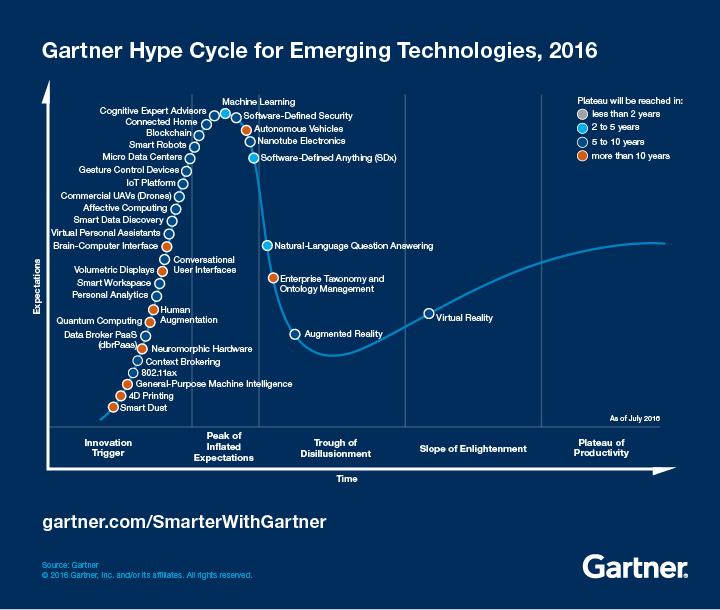Understanding Tech Trends to Formulate Your 2017 Training Strategy
Are you prepared for 2017? Is it going to be business as usual for you and your team? Or is there something big happening?
Before you begin designing your plans for next year let’s take a look at a few data points. There are 3 very high-level areas I often review to get an idea of what’s really happening within our little corner of the business world. There is the larger global audience in general, the L&D “industry” audience, and then there are the trends within your company, business, organization, division, etc.
But before we talk about those areas let explain my view of “our little corner of the business world” this way: It’s anyone, any department head, or any business that is thinking about training or is responsible, in some way, for the training function. This means that you don’t need to be a “Training Professional” to be responsible for training within your division or organization. Training still occurs in organizations without any official training manager or training professional on staff. In fact, I would argue that number is bigger than most think, and increasing steadily. Many undefined professionals responsible for training don’t attend our industry events, and do not engage in our professional organizations either. They do the work of training but don’t consider themselves trainers, or that training is their primary skill set. This more realistic view of the training, learning and development audience, has expanded significantly over recent years and therefore more inclusive than is normally reported. This means our industry often does not fully represent everyone who trains, or is responsible for training.
And because of this broad view of professionals who need training solutions, tools, advice, and support, it’s important that we look at more expanded global trends as well as more specific company trends.
Global Technology Trends that Support Training Trends
Let’s start with understand global technology trends. There are plenty of research businesses that offer technology insights via trends spotted in their surveys. Just google “technology internet trends” and you’ll be in a sea of options. I tend to get the most value from anything related to the Gartner Hype Cycle curve and their identification of certain trends they see in the rapidly expanding technology sector. The other fun report to see each year is Mary Meeker’s Internet Trends Report.
Gartner Hype Cycle for Emerging Technologies
The Gartner Hype Cycle for emerging technologies gives us a view of global technology on a path through a standard life cycle. If you are unfamiliar with the curve then you should check it out and learn more. In my experience it has been remarkably accurate…at least in my personal experience and from my view of the world.
It’s also important to note that in my personal experience, L&D, in general, lags behind in it’s use of new technologies and emerging trends. And that’s important to note because we don’t want to make the mistake of applying Gartner’s forecasted dates to the date/year that L&D usage is mainstream. As an example, the internet was well beyond mainstream usage before delivering effective online learning experiences became common place. And one would argue we still haven’t gotten there yet.
But if you look at the Gartner Hype Cycle you can at least begin to formulate questions about the future of your training strategies and begin to anticipate your next move with confidence.
Mary Meeker’s Internet Trends Report
This report from KCPB is always filled with fascinating data points. Her, often lengthy slide deck, simplifies the overwhelming amount of data and condenses it into understandable nuggets.
This report also covers trends in the usage of technology in general across the globe. And again, this does not directly correlate to trends in L&D because we lag behind. This lag is necessary because our training is most effective when we deliver it where the learners are. That means it doesn’t do any good to jump onto a new technology trend if the audience you support is not using it. However, as leaders of training, and L&D organizations, this data is critical in helping prepare for the future.
Understanding global trends is only a third of the puzzle for us. They give us insight into what MIGHT be available to us in the future. It doesn’t guarantee anything other than a crystal ball view of the possibilities that lie ahead. But looking into that crystal ball gives you an idea of where to place your bets and begin to prepare for the future.
The L&D Industry Trends and Training Trends
This is where things get interesting. Since 2014 Donald Taylor’s 2016 L&D Sentiment Survey has revealed some interesting insights. Donald asks one simple question to L&D professionals, “What will be hot in workplace L&D in 20xx?” The insights and the conclusions drawn from them are quite interesting. What I love most about the report is that the data forces us to think more deeply about each of the topics.
For example, as topics begin to drop down, and eventually off, the list one might think they are no longer important to L&D professionals. But the alternative and more popular view is that the topic has simply become commonplace in our training strategies. The topics used so much that it’s no long a “hot” topic, because it’s just part of the norm. The conclusion from the 2016 survey is that Mobile delivery, Synchronous online delivery, and video, have all gone “mainstream”.
This report is an interesting benchmark against what your current training strategy is. Is mobile, synchronous, and video deeply embedded as part of your strategy today? If not, these are 3 areas you may want to focus your 2017 efforts.
However, that leads us to my third area of focus on trends.
Technology Trends Within Your Business And Their Connection to Training Trends
Every business has training needs. But those needs vary based on factors like budget, internal IT, location, culture, internal politics, to name a few. How you provide training experiences, and deliver learning opportunities is unique to you and your organization. Simply knowing that most L&D professionals utilize mobile, synchronous, and video solutions does not mean any of them are the best solutions for you, your team, and your business. Understanding the audience you serve is the best knowledge you have to create the most successful solutions.
If your audience is not allowed to have mobile devices while on the job, then mobile learning is probably not a good idea. There are always very important reasons why solutions work well in some businesses and not in others. This is why global data, and industry data alone do not offer enough information to make the best decisions. You must go where your learners are. Meet them where they are comfortable within the context of their work, and in the technologies they are comfortable using. Once there is a common denominator of tech within your audience then you’ve found a good channel of training delivery. It may not be the primary channel. But there is definitely something you can provide through that tech that can add business value.
And adding business value is what you need to be focused on. Training leaders need to be aware of how to add business value today, under the current constraints of their business. But they also need to be looking how they will continue to add value in the future based on what they know of the business’s future plans. Look to the global trends, and the industry trends to guide your direction but place your bets on the current and future state of your specific business and the learners you support.
Your most important decision is how to build the infrastructure of the training function and support the learning process of the audience you support. Build your training strategy on a reliable platform that has proven it’s support of strong current technologies as well as the innovation to help prepare you for the future.
Please feel free to contact me via twitter @bschlenker. I would also encourage you to sign up for a free trial of the Litmos platform.







